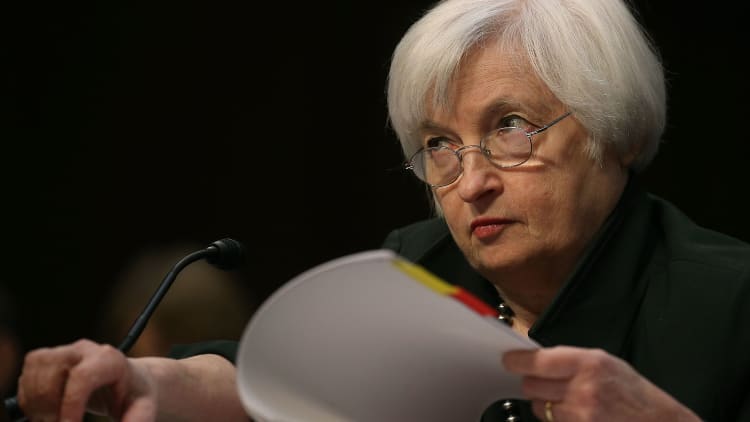
Regardless of what Friday's jobs report shows, analysts say the Federal Reserve is intent on raising interest rates next week.
The highly anticipated employment report is due for release Friday morning. The consensus forecast of analysts polled by Reuters estimates a rise of 190,000 nonfarm payrolls in February, down from 227,000 in January. The unemployment rate is expected to edge down from 4.8 percent to 4.7 percent, while average hourly earnings are forecast to increase 0.3 percent from the prior month.
"It's going to be hard for this report to be a negative in terms of rate hikes," said Diane Swonk of DS Economics. She estimates a hiring freeze in the federal government will take about 10,000 from the total as no replacements come in for retiring workers.
That puts her estimate on the low end at 160,000 jobs, still enough for the Fed to raise rates in March. "What's important to remember is the threshold is very low for the Fed," she said. "That is something we have to get used to."
Fed Chair Janet Yellen noted last week that net new monthly jobs are well above the longer-run trend in labor force growth between 75,000 and 125,000. As a result, Yellen said, the labor market is in the range of the Fed's employment goal and policymakers consider "it appropriate to move toward a neutral policy stance."
The Federal Open Market Committee meets next Tuesday and Wednesday, and is expected to raise rates for the third time in just about a decade. Traders are now focused on whether the Fed will signal a faster pace of tightening.
Paul Christopher, head global market strategist at Wells Fargo Investment Institute, expects the two rate hikes this year, below the consensus for three.

"If it's a really strong report, plus 200 [thousand] again, the market may start to decide to rethink whether its priced in enough economic improvement for the year," he said. But "the odds we see the economy are going to be stronger than 2.3, 2.4 [percent growth] this year are slim. I think it's more likely the economy remains predictable — and therefore already priced in — and the [federal government] policy disappoints."
Expectations for a solid, if not strong, jobs number are high. After the private payrolls report came in well above expectations at 298,000 on Wednesday, Goldman Sachs raised its estimate to 215,000 and UBS increased its forecast to 225,000.
Economists generally attributed the strong report to warmer weather, which spurred job creation in areas such as construction.
Joe Seydl, economist at J.P. Morgan Private Bank, expects that for the headline nonfarm payrolls figure, "at least 50 to 60,000 of it will be driven by warm weather."
"It's getting tough to decipher the underlying trend when you remove the weather factor," he said.
Treasury yields have climbed steadily in the last week. Markets reacted positively to President Donald Trump's conventional address to Congress, while an array of Fed speakers including Yellen talked up the likelihood of a March rate hike.
The U.S. , which is most sensitive to near-term expectations on Fed policy, on Thursday held near highs not seen since the summer of 2009. The 10-year yield hit 2.607 percent, its highest since mid-December. The 10-year yield has held in a range since the election and struggled to trade much above 2.6 percent.
"The number tomorrow could break them out of that range if wages really take a big step," said John Bredemus, vice president at Allianz Investment Management.
That said, U.S. stocks remain focused on promises of pro-growth policies from the Trump administration.
"It's very hard to get this market to go down when expectations are so focused on what's going to come out of policy in Washington," said Peter Coleman, head trader at Convergex.
The squeezed out a nearly 2-point gain to close around 2,364.9 despite a continued drop in oil prices. Health care led advancers, while real estate was the worst performing sector.
U.S. crude oil extended Wednesday's plunge to settle at $49.28 a barrel on Thursday, its lowest since Nov. 29. The weekly oil rig count is scheduled for release Friday afternoon.
The Treasury budget is the only other major economic report set for release Friday. Vail Resorts is due to post earnings before the open.
Watch: Fed in hiking cycle



